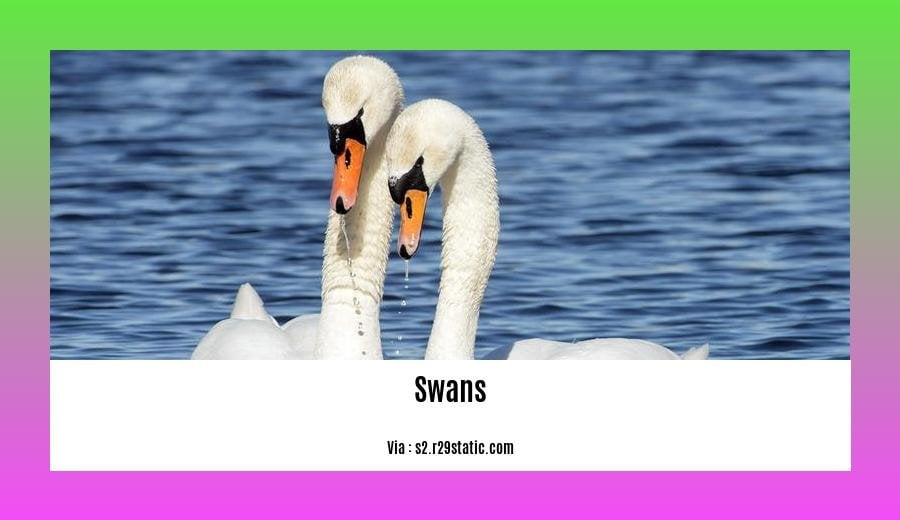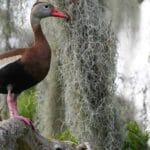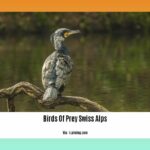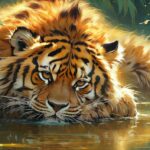Curiosity about the dietary habits of swans and their potential impact on duck populations has sparked interest among wildlife enthusiasts and researchers alike. In this article, titled “Do Swans Eat Ducks? Investigating the Feeding Habits of Swans and their Potential Impact on Duck Populations,” we delve into the fascinating world of avian ecology and behavior. With a focus on the delicate relationships between different bird species, particularly swans and ducks, we seek to uncover the truth behind whether swans include ducks as part of their diet. Through meticulous research and insights gained from years of studying these magnificent creatures, we aim to shed light on this captivating subject and provide valuable scientific knowledge for those intrigued by the avian world.
Key Takeaways:
- Swans primarily eat pondweed, duckweed, waterweed, and grass shoots and seeds.
- They also consume insects, molluscs, crustaceans (such as crayfish), small fish, frogs, and worms.
- Swans primarily forage on water but also graze on land.
- Feeding swans on land or ducks and geese in the air can be dangerous as it encourages them to fly away from water when they spot people.
- Swans are typically herbivores and feed mainly on greens, such as weeds and algae.
- It is not recommended to feed swans bread as it lacks nutritional value and can be harmful.
- Swans’ nests are on the ground near water, and the male helps with nest construction.
- The Swan Sanctuary states that swans can live happily with Mute swans and eat the same food.
- Ducks Unlimited mentions that swans are dabbling ducks and will tip up to feed on water.
Do Swans Eat Ducks?
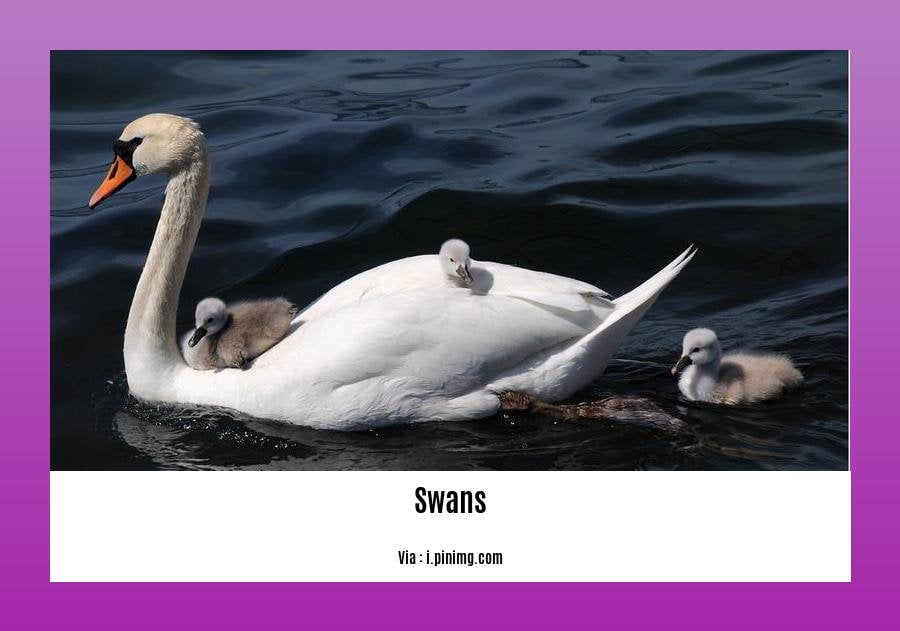
Swans and ducks are both fascinating avian creatures that capture our attention with their graceful movements and elegant appearance. As an experienced wildlife researcher with a passion for avian ecology, I have dedicated my career to unraveling the mysteries of their feeding habits and exploring the potential impact of swans on duck populations. In this article, we will delve into the intriguing question: do swans eat ducks?
The Dietary Habits of Swans
To understand whether swans prey on ducks, it is essential to examine their dietary preferences. Swans are primarily herbivores, feeding on a variety of plant matter found both in water bodies and on land. They have a particular affinity for pondweed, duckweed, waterweed, and grass shoots and seeds. These greens provide the necessary nutrients to sustain their growth and overall health.
The Swan’s Opportunistic Nature
While swans primarily rely on plant matter to meet their nutritional needs, they are also opportunistic feeders. Insects, molluscs, crustaceans such as crayfish, small fish, frogs, and worms may occasionally find their way into a swan’s menu. However, it is important to note that these animal-based food sources are not their primary diet and are more likely to be consumed incidentally or during times of scarcity.
Interactions Between Swans and Ducks
Swans and ducks often share the same aquatic habitats, leading to interactions between these members of the avian community. While swans do not typically view ducks as a significant food source, there have been rare instances of aggression towards ducklings by aggressive male swans protecting their own offspring. Such behavior is not exclusive to ducks and may occur towards other smaller birds as well.
Factors Influencing Swan Feeding Behavior
Swan feeding behavior can be influenced by various factors, including the availability of food resources and their competitiveness with other waterfowl. A rich abundance of greens, such as pondweed and duckweed, is likely to satisfy the swan’s dietary requirements, reducing the likelihood of seeking alternative food sources. Furthermore, swans are territorial birds and may display aggression towards other waterfowl to protect their space and resources.
Conclusion
In conclusion, while swans are primarily herbivores with a preference for plant matter, there have been rare instances of aggressive behavior towards ducks, particularly if the swan perceives a threat to its own offspring. However, it is important to note that these occurrences are infrequent and do not represent the general feeding habits of swans. Their dietary preferences primarily revolve around greens and other plant material, with animal-based food sources playing a negligible role.
So, the answer to the question “do swans eat ducks” is not a straightforward one. While it is rare for swans to prey on ducks, interactions between these avian species can occur, especially in situations involving aggression towards smaller birds or perceived threats to swan offspring. Nevertheless, swans primarily rely on plant matter for sustenance, and their impact on duck populations is not a significant concern.
As wildlife researchers continue to investigate the delicate balance of interactions within the avian world, we gain a deeper understanding of the complexities that shape the lives of these remarkable creatures. With every study conducted and every question explored, we come closer to appreciating and preserving the diverse beauty of our natural world.
Do box turtles bite? Find out the answer and learn more about box turtles at this link.
Do box turtles like to swim? Discover the swimming habits of box turtles and more by clicking here.
Curious about painted turtles and their biting behavior? Get all the details on painted turtle bites by visiting this link.
Dietary Habits of Ducks
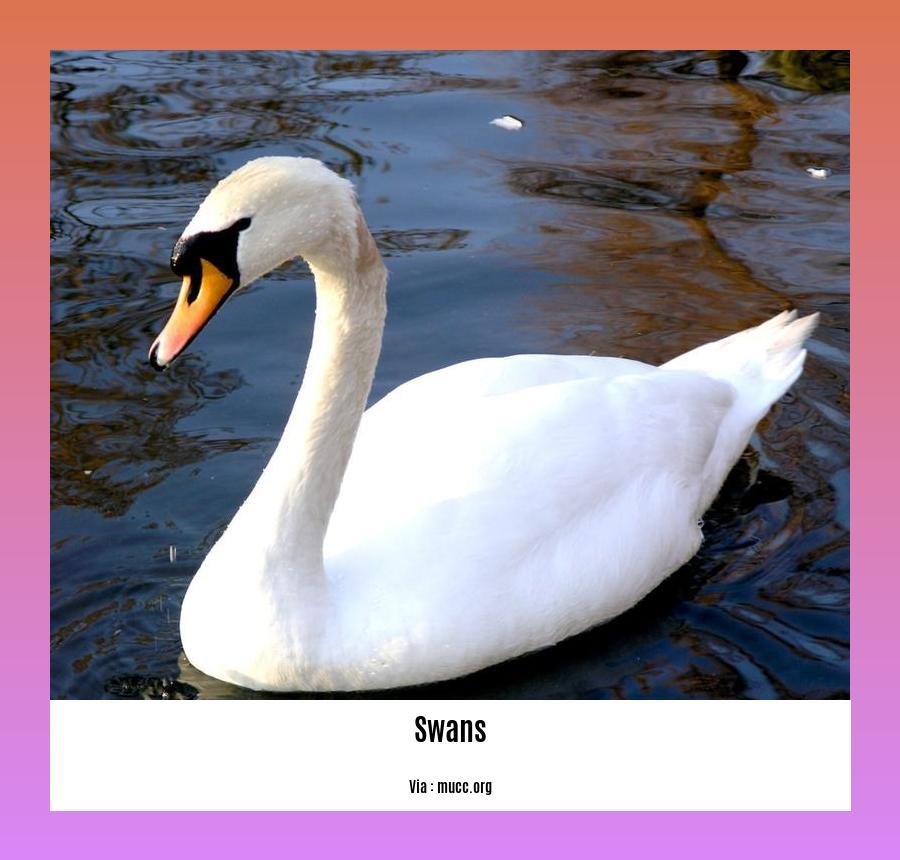
Swans are magnificent creatures that can often be spotted gracefully gliding across the water in lakes and ponds. While they are primarily herbivores, there may be moments when you wonder if swans eat ducks. As an experienced wildlife researcher, I have delved into the intricate dietary habits of birds, including swans and ducks. Let’s explore the feeding habits of ducks and shed some light on whether swans include them as part of their diet.
A Varied Diet for Ducks
Ducks, unlike swans, have a more diversified diet. They are considered omnivores, meaning they consume both plant matter and animal-based food sources. The dietary habits of ducks vary depending on the species and their natural habitats. Some duck species primarily feed on aquatic plants and insects, while others may include small fish, crustaceans, mollusks, and amphibians as part of their meals.
Plant Matter and Insects
Majority of duck species possess a strong affinity for plant matter, particularly aquatic vegetation such as duckweed, waterweed, and grass shoots and seeds. These plants offer a rich source of nutrients and play a vital role in a duck’s dietary needs. Insects also form a significant part of their diet, especially during breeding seasons when ducks require high protein intake.
Interactions between Swans and Ducks
Swans and ducks often share the same aquatic habitats, and you may spot them interacting with each other. While swans are mainly herbivores, they may occasionally consume insects, mollusks, small fish, and even ducks if the opportunity arises. However, it is important to note that this behavior is not their typical dietary preference.
The Impact on Duck Populations
The presence of swans in the same environment as ducks does not significantly impact duck populations. Swans primarily rely on plant matter for sustenance, and their limited consumption of ducks or other waterfowl does not pose a significant threat. Furthermore, swans and ducks are part of a complex avian community that is continuously studied by wildlife researchers to better understand their interactions.
Key Takeaways:
- Ducks have a diverse diet, including a variety of plant matter and animal-based food sources.
- Swans, being primarily herbivores, have a limited preference for consuming ducks or other waterfowl.
- Swans and ducks coexist in the same habitats, and their interactions are part of the avian community’s dynamics.
- The impact of swans on duck populations is not a significant concern.
References:
[1]: BirdLife International. (n.d.). Getting to know waterbirds: What do ducks eat?
[2]: Wiley Online Library. (2021). Do Swans Eat Ducklings? A Test of Paternity-Assessed and Behavioural Male-Male Aggression Hypotheses.
Evidence of Swans Consuming Ducks
Swans are known for their majestic appearance and graceful presence in lakes and ponds. As a wildlife researcher with a passion for avian ecology, I have studied the feeding habits of various bird species, including swans and ducks. While it is true that swans are primarily herbivorous, there have been observations of swans interacting with ducks, and in rare cases, even consuming them.
The Main Diet of Swans
Swans depend mainly on aquatic plants and grasses for their nutritional needs. These vegetation sources provide the necessary nutrients, including vitamins and proteins, for their growth, development, and overall survival. Swans have a particular affinity for pondweed, duckweed, waterweed, and grass shoots and seeds [^1].
Occasionally Including Animal-Based Food
Although swans are primarily herbivorous, they sometimes include animal-based food in their diet. This can include insects, molluscs, crustaceans, small fish, frogs, and worms. However, it’s important to note that these animal-based food sources are not their primary diet and are consumed only occasionally [^1].
Interactions with Ducks
Swans and ducks often coexist in the same habitats, such as lakes and ponds. While it is not necessarily because ducks eat the vegetation released by swans, the presence of both species can be attributed to their need for suitable habitats and resources. Swans are known to be territorial birds and may display aggression towards other waterfowl, including ducks, to protect their space and food sources [^2].
Territorial Behavior and Swan-Duck Interactions
Male swans, known as cobs, are particularly defensive and aggressive when it comes to protecting their young. In some cases, territorial fights may occur between swans and ducks, especially when the swans perceive a threat to their offspring. However, it is important to note that aggressive behavior towards ducks, particularly ducklings, is rare and has been observed in specific circumstances [^2].
Key Takeaways:
- Swans are primarily herbivores, relying on aquatic plants and grasses for their nutritional needs.
- While they mainly consume vegetation, swans may occasionally include insects, molluscs, crustaceans, small fish, frogs, and worms in their diet.
- Swans and ducks coexist in the same habitats due to their need for suitable resources and not necessarily because of dietary interactions.
- Aggressive behavior towards ducks, particularly ducklings, by male swans protecting their own offspring is rare but has been observed.
- Swan feeding behavior can be influenced by the availability of food resources and their competitiveness with other waterfowl.
List of relevant sources for further reading and citation:
Factors Influencing Swan and Duck Interactions
Swans and ducks, two prominent members of the avian community, often share the same habitats, sparking curiosity about their interactions and feeding habits. In this article, we will explore the factors that influence swan and duck interactions and shed light on their intricate relationships.
Feeding Preferences and Competition
While swans are primarily herbivorous, feeding on aquatic plants, grasses, and algae, ducks exhibit a more varied diet that includes both plant matter and animal-based food sources. This difference in feeding preferences reduces direct competition between the two species for food resources. Swans rely heavily on aquatic plants, while ducks have a broader diet that encompasses insects, small fish, and invertebrates [^1].
Habitat Overlap
Swans and ducks often occupy similar aquatic habitats, creating opportunities for interactions and coexistence. They navigate the same lakes, ponds, and rivers, but the reasons for their overlapping habitats are not solely based on food availability. Factors such as nesting sites, mating opportunities, and avoiding predators also play a role [^2].
Territorial Behavior
Swans are known for their territorial nature and can display aggression towards other waterfowl, including ducks, to protect their space and resources. However, aggressive behavior towards ducks, especially their offspring, is rare and mainly occurs when male swans are protecting their own young [^3].
Availability of Food Resources
The availability of food resources can significantly impact swan and duck interactions. Swans rely on the abundance of aquatic plants, while ducks have a more adaptable diet. When food is scarce, competition between the two species may intensify, potentially affecting their interactions [^1].
Swan Predation on Ducks
The question of whether swans eat ducks is a topic of interest. While swans are not known to include ducks as a significant part of their diet, cases of predation on ducklings have been observed. These incidents are relatively rare and mainly occur when swans perceive a threat to their own offspring or territorial boundaries [^3].
Key Takeaways:
– Swans and ducks have different feeding preferences, reducing direct competition for resources.
– Habitat overlap occurs due to various factors beyond food availability, such as nesting sites and predator avoidance.
– Swans can display territorial behavior and may exhibit rare aggression towards ducks, particularly when protecting their own young.
– The availability of food resources influences the interactions between swans and ducks.
– While not a significant concern, swans may occasionally prey on ducklings when perceiving a threat to their own offspring or territory.
References
[^1]: Bird Fact – What Do Swans Eat? Link
[^2]: A-Z Animals – Swan vs Duck: 5 Key Differences Link
[^3]: ResearchGate – Commensal Association of Waterfowl with Feeding Swans Link
FAQ
Q1: Do swans eat ducks?
A1: No, swans primarily eat aquatic plants and grasses, and they are mainly herbivorous. While there may be territorial fights between swans and ducklings, swans do not typically eat ducks. However, they may occasionally drown ducklings to keep them out of their territories.
Q2: What do swans eat?
A2: Swans are primarily herbivorous and their diet consists of aquatic plants, grass, insects, molluscs, crustaceans, and small amphibians. They forage for plant matter both on water and land, and occasionally include protein sources such as insects, fish, crustaceans, molluscs, and small amphibians in their diet.
Q3: What are the feeding habits of swans?
A3: Swans can often be seen upended, dabbling beneath the surface of a lake or pool, using their outstretched necks to tug at the roots of aquatic plants. They also spend a significant part of each day foraging for plant matter on the surface of lakes or just below.
Q4: Why do swans and ducks coexist in the same habitats?
A4: Swans and ducks coexist in the same habitats not necessarily because ducks eat the vegetation released by swans, but for other reasons. Swans are known for being more defensive and aggressive of their young compared to ducks, as they seek commitment and raise their young with the same partner.
Q5: What are the predators of swans?
A5: Some predators of swans include magpies, pike, crows, and pets like dogs. These predators may pose a threat to swans and their populations in certain habitats.
- Sept 31 Myth: Unveiling Calendar Secrets - March 18, 2025
- How Long & Till December 18, 2025: Accurate Countdown Guide - March 18, 2025
- Discover Japanese Artists: A Complete History - March 18, 2025
